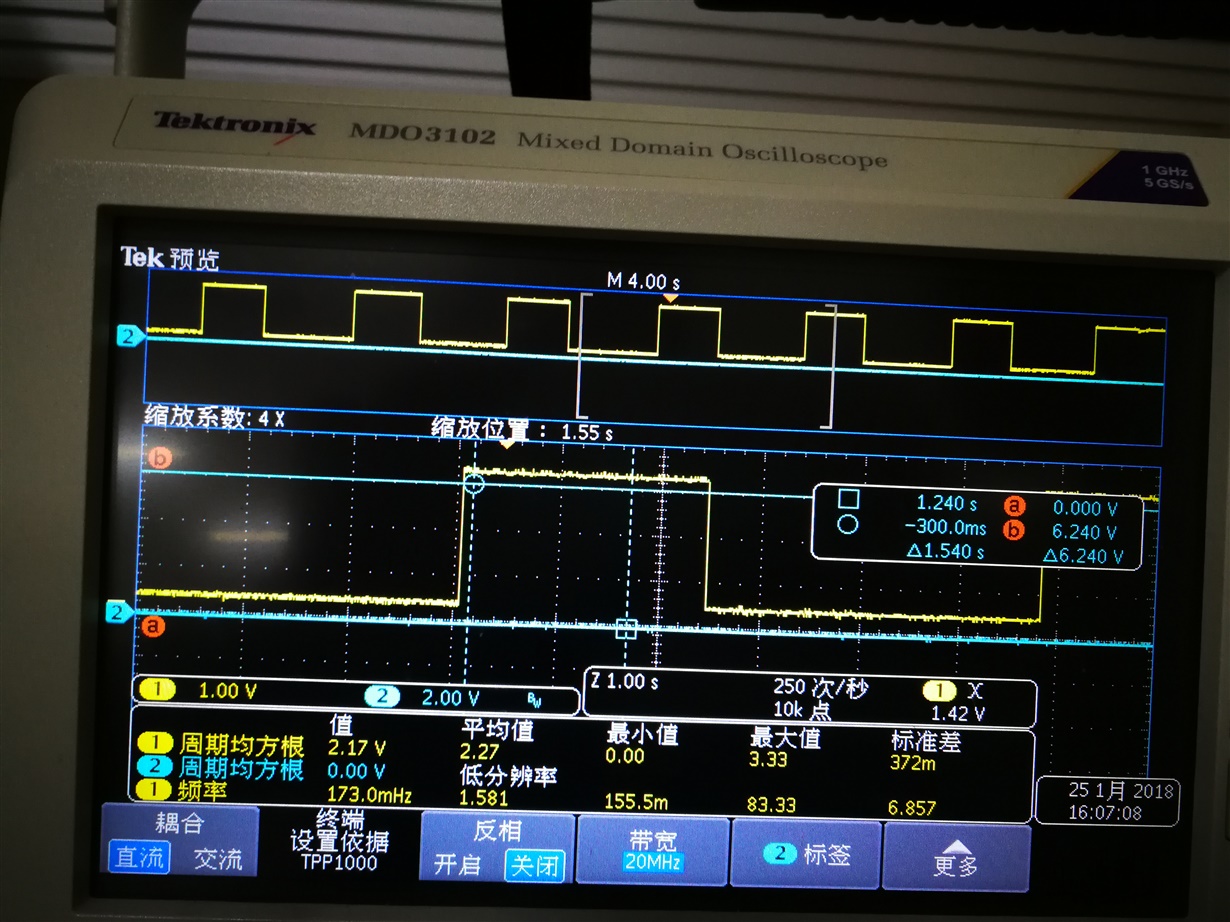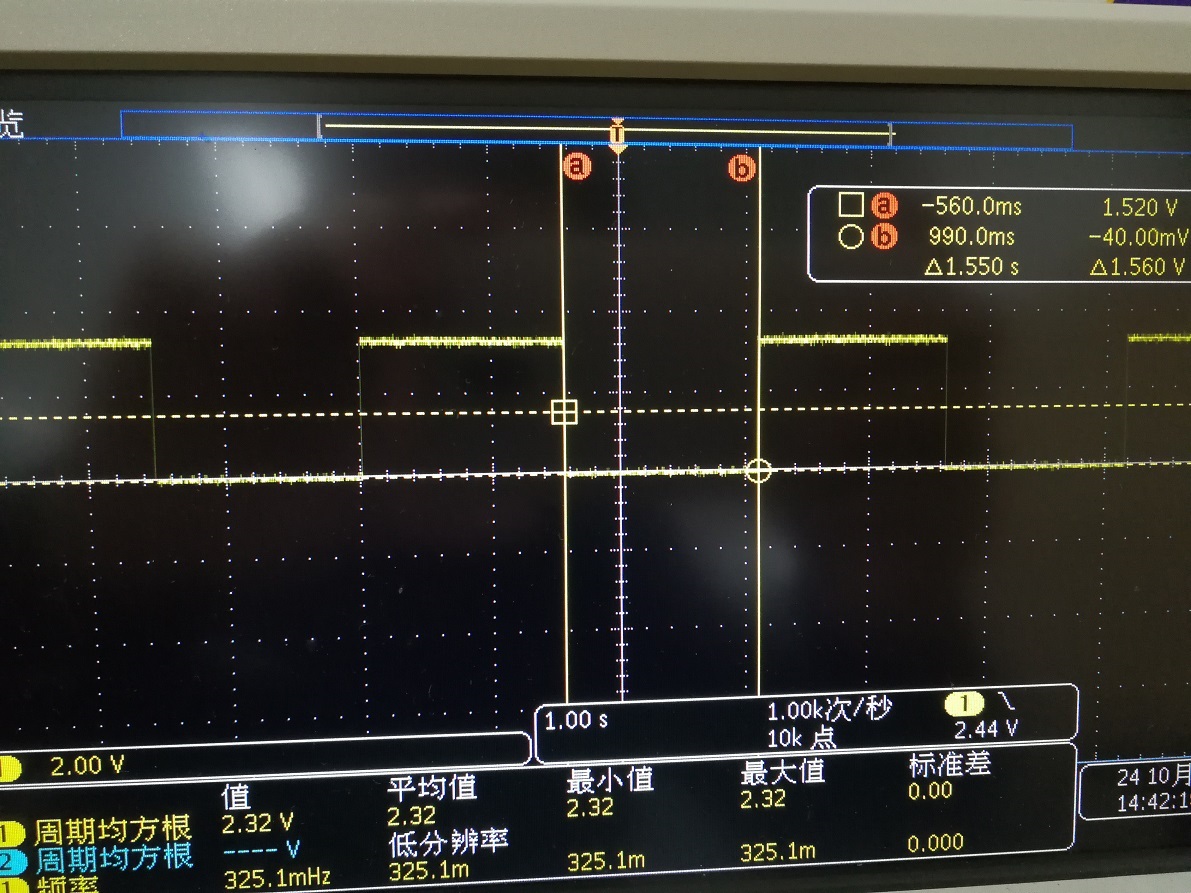Other Parts Discussed in Thread: DRV5055-Q1, DRV5012
Dear TI Support Team
We want to promote DRV5032 to replace MMS1X1H(Hall Sensor) on Gas Meter.Customer select DRV5032FD with unipolar output to test,They connect OUT1 pin and OUT2 to one output signal and test the waveform contrasted MMS1X1H's waveform,they found the duty cycle of DRV5032FD is about 50% that is similar to MMS1X1H,but the period of DRV5032FD is about 6 seconds that is twice MMS1X1H(3 seconds).
How can we do some change to reduce the output period from 6s to 3s? so customer don't need to change the metering software.
DRV5032FD Output waveform:
MMS1X1H Output waveform:



